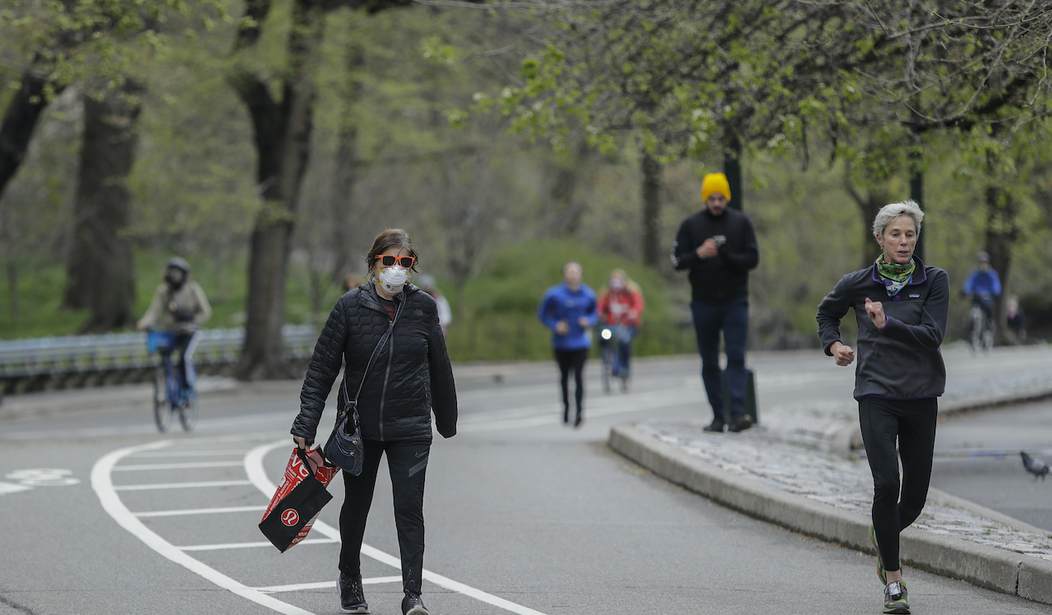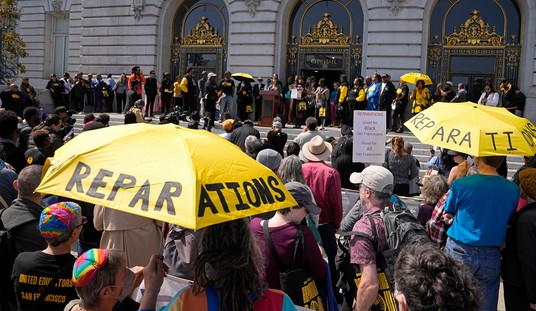What was Pew Research thinking to trot this piece out about the differences between GOP and Democratic-controlled counties impacted by the coronavirus? Was this a way to take a swipe at the GOP? Was it to pour more gasoline on the fake news story about COVID hot spots being impacting rural areas? I don’t know, but it did succeed in pointing out that viral outbreaks spread like a brushfire in densely packed population centers, like cities, whereas the spread slows down in rural areas where people are more spaced out.
Sorry, I know you know this, but what the hell is going on here? The hook for liberal readers appears to be the fact that COVID deaths aren’t dropping as quickly in red counties, which weren’t hit nearly as bad as New York City or the Acela Corridor, so again—what is this? (via Pew):
Of the 44 hardest-hit congressional districts – the top 10% in terms of deaths – 41 are represented by Democrats, while three are represented by Republicans. These include the New York-area districts, as well as those in the Boston, Detroit and New Orleans metropolitan areas. The average death toll in each of these hardest-hit districts was 1,122 as of May 20.
The next 100 hardest-hit districts, which represent the remainder of the top third of districts, with an average of 270 deaths, also are disproportionately represented by Democrats: 75 are represented by Democrats, 25 by Republicans.
About two-thirds (68%) of the 44 least affected districts – the bottom 10%, with an average 13 deaths in each district – are represented by Republicans in Congress.
While the current death rates remain highest in districts controlled by Democrats, the trend in coronavirus fatalities over time has been decreasing in Democratic districts steadily since mid-April. In contrast, Republican-controlled districts have not seen the same declines in the trend over time.
Yeah, it’s why that study about how elderly deaths could impact Trump’s 2020 re-election was equally absurd, just red meat for Trump-deranged liberals to distract them from the notion that their areas are infested with COVID. This was partially due to their leaders sitting on their hands and doing stuff like forcing nursing homes to admit COVID-positive patients, looking at you Bill de Blasio and Andrew Cuomo. The latter’s grim reaper policy is bound to boomerang on him, as he’s tried to deep-six the order:
Recommended
Breaking: @NYGovCuomo deleted his March 25th order to force nursing homes to admit recovering coronavirus patients.
— Reagan Battalion (@ReaganBattalion) May 26, 2020
The NYS Department of health removed the page from their website. pic.twitter.com/wrZ7EfjqsM
Yet, let’s bring it over to Ed, our great friend from Hot Air, who took a blowtorch to this whole…article. Professor Morrissey has entered the chat:
I’m not sure what point Pew Research thought they were making with this chart, but it ain’t the one that comes across in it. https://t.co/ptA4r11Icu
— Ed Morrissey (@EdMorrissey) May 27, 2020
The obvious reason why GOP-controlled districts have a shallower decline in death rates is because they had a much shallower incline. The peak in these districts was just one-third of the peak in Democrat districts, which still have more than twice the rate of deaths at this time. This is so obvious that it speaks to a blinding bias on the part of Pew Research that they couldn’t see it for themselves before publishing it — and then promoting this hot take.
Put it this way: what impact does a House member have on policy and governance specific to his/her district? None at all, which is why this analysis is entirely useless. This is correlation without causation, a very common statistical fallacy that one would ding students for creating in an undergrad paper.
To have this appear in a Pew Research publication suggests another form of causation — political bias. It undermines Pew’s credibility and calls into question all of their work in this political environment, if for no other reason the sheer idiocy involved in making that bias sooooooo obvious.
End of lesson.

























Join the conversation as a VIP Member